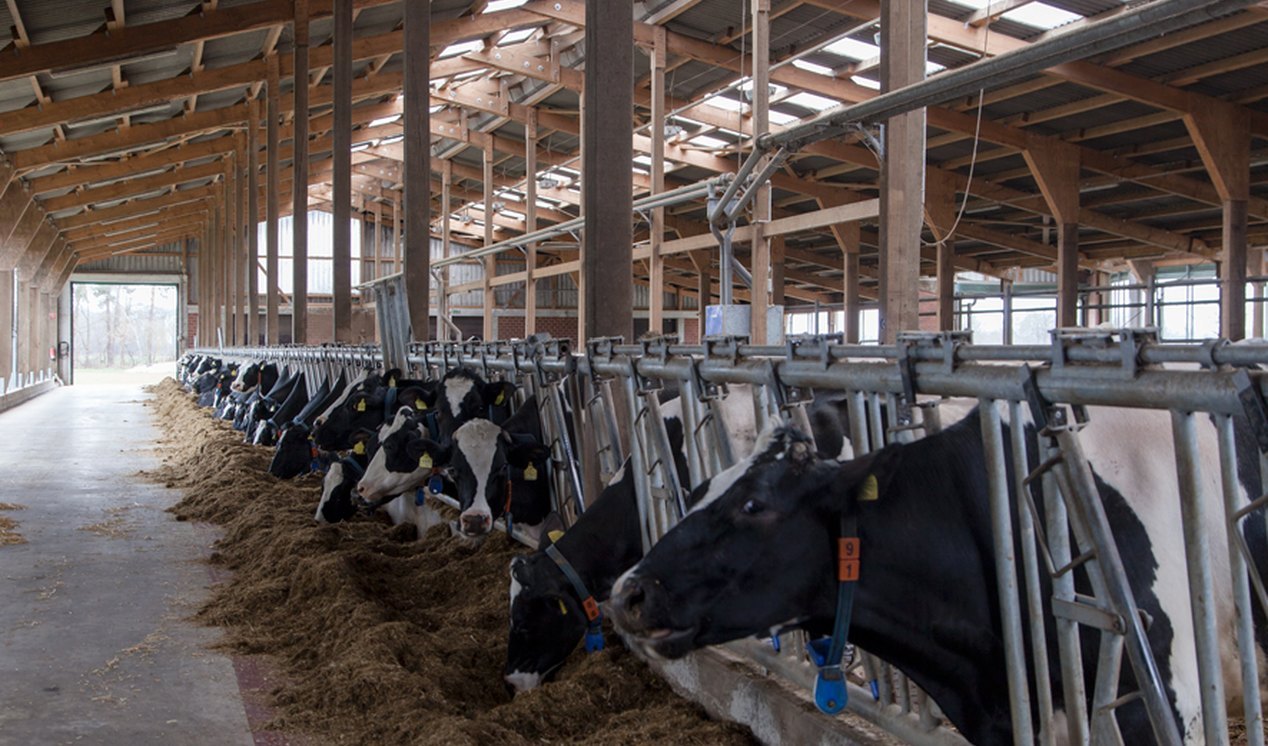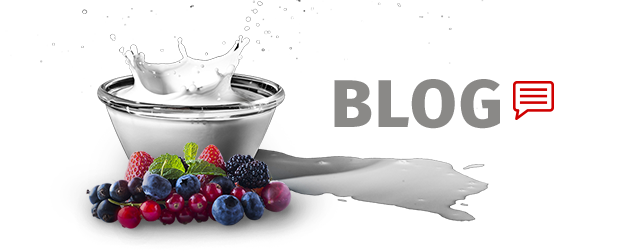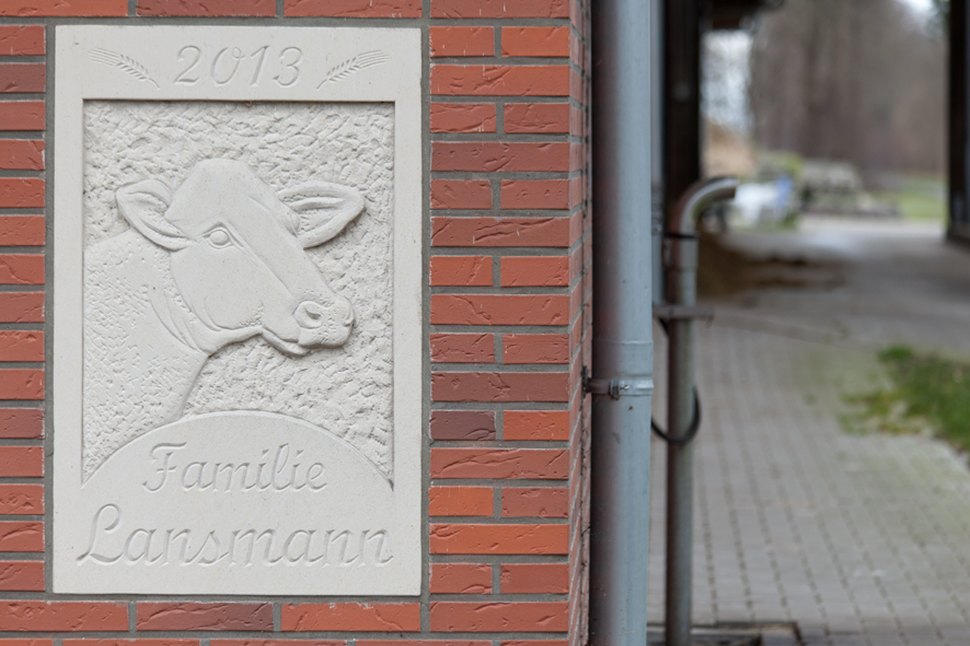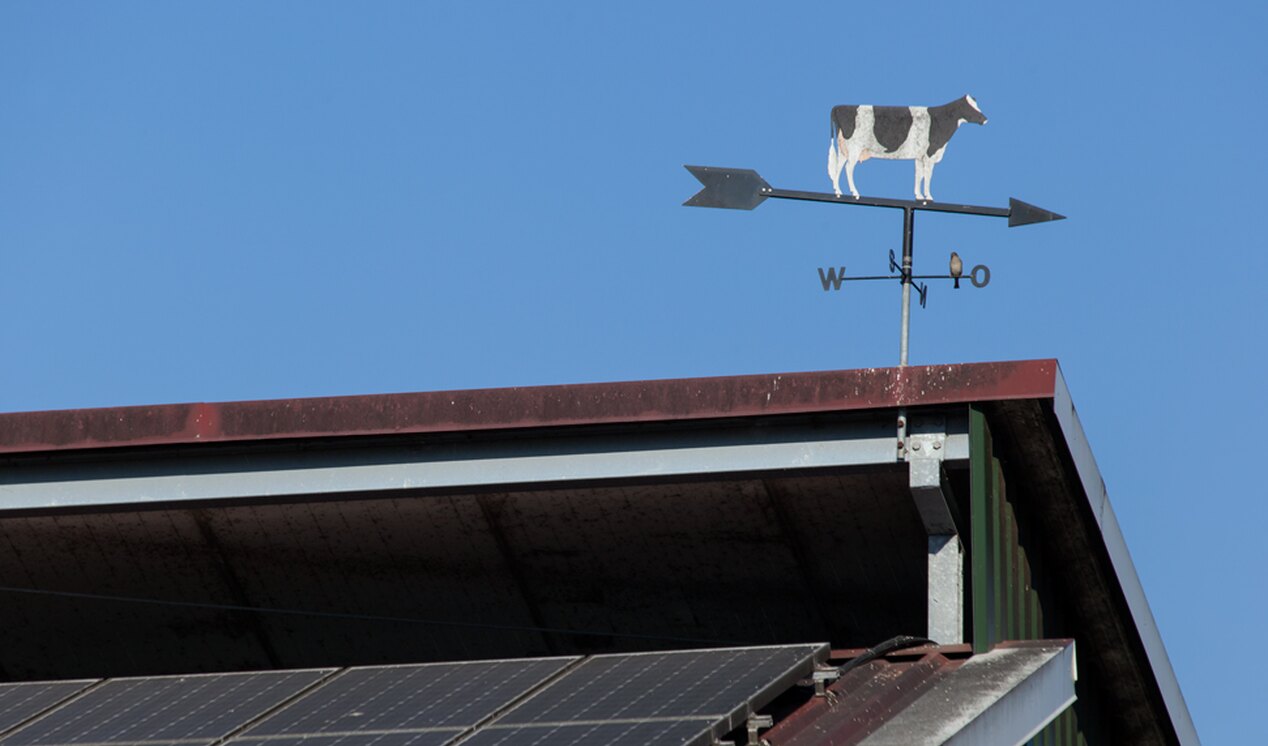Farm Lansmann
Hof Lansmann is a farm that has existed at the present location since 1980, when Gerold Lansmann's father was looking for future-proof farm areas to relocate to. However, the family has been active in agriculture since the 17th century. Since Gerold Lansmann leads the farm, he has specialised in dairy farming and has decided against parallel chicken farming. There are currently about 300 heads of cattle on the farm, of which about half are producing milk. The other half is still being reared or waiting for calving. The farm has trained prospective farmers for four years.
Milk
The milk record on Lansmann is 70 litres, which a cow once produced in a single day – on average, they produce 30 litres. The milk is stored at four degrees Celsius in the tank, which holds around 12,000 litres. Every two days, a tanker comes from Naarmann and collects the milk: around 8,500 kilograms. The tank on the Lansmann farm is technically so modern that it could be used without concern for the next 20 years.
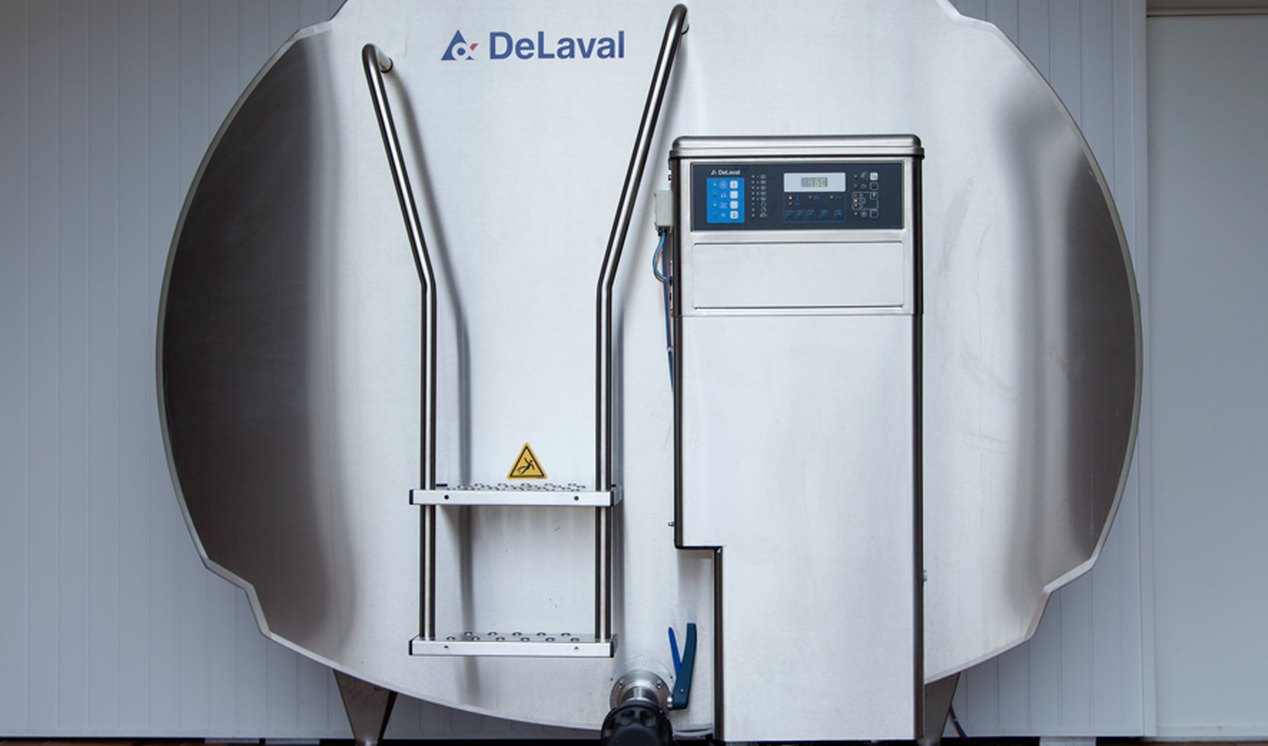
Milking machine
Twice a day, the cows are driven to the waiting area in front of the milking stall. A special gate, the "cow driver", automatically drives the cows into the milking stall. It has two sets of twelve stalls and can be extended to up to 32 stalls. The spring-mounted lifting floor protects the back of employees of different sizes and the plastic mat protects against cold feet. Milking takes about one and a half hours. The power supply, water technology and milking data are processed in the control area below the stalls.
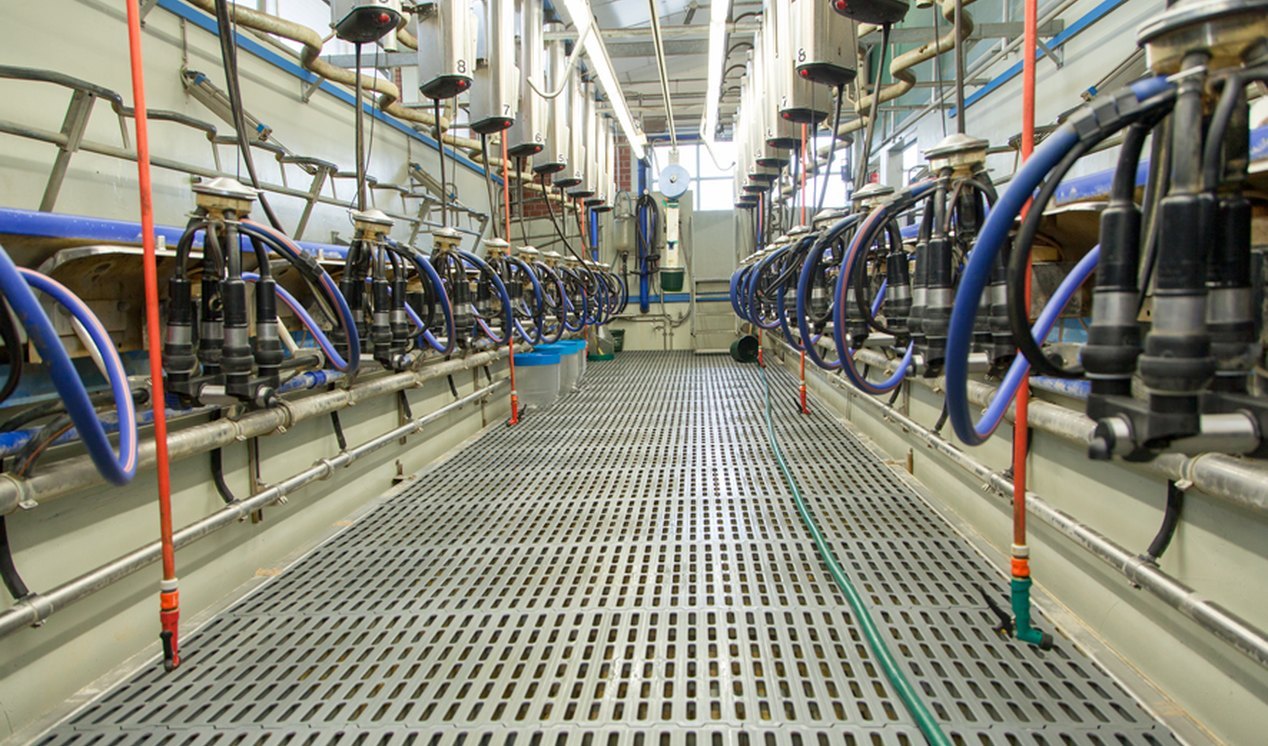
If a cow eats less than usual, gives less milk, or if the motion sensor in her collar measures an unusual level of activity, the PC gives an alarm and the farmer can have the cow separated from the rest. After milking, the cows wade through a hoof bath that prevents fungal infections and inflammation. Subsequently, a computer-controlled gate separates the cows which the farmer wants to observe more closely.
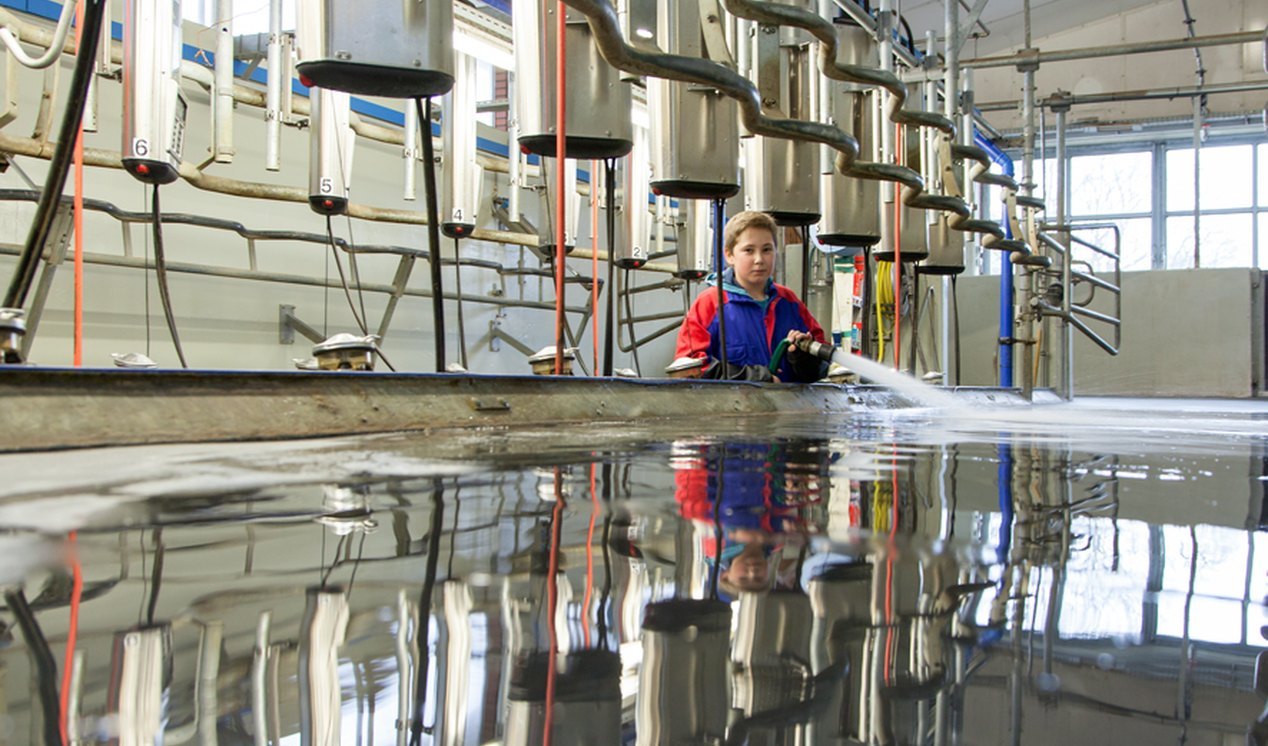
Cleanliness
The cows’ droppings fall through the grate floor into a receptacle, keeping the animals dry and free of infection. Every two hours, a column robot cleans the entire floor – in a completely automated process. Pen cleaning also takes place twice a day. Lansmann attaches particular importance to hygiene in the milk tank room: the self-closing doors prevent cats and dogs from entering, and the room is easy to keep clean.
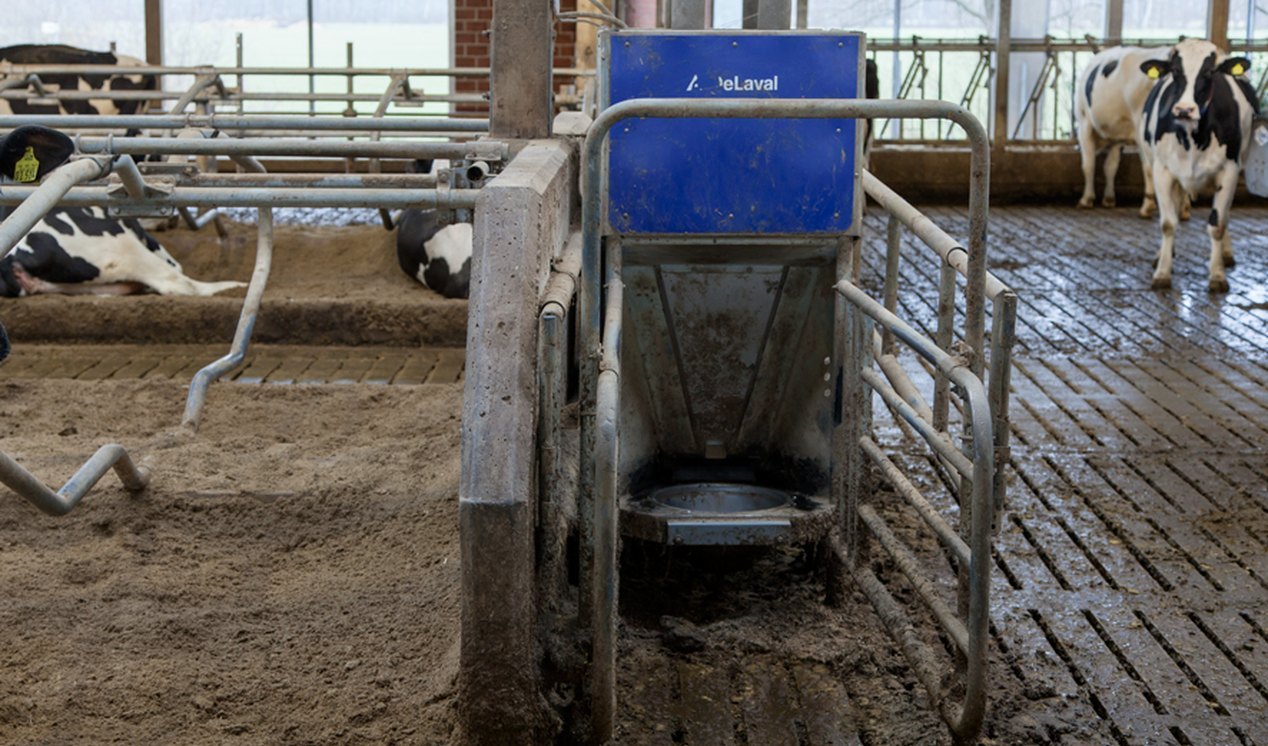
Stall type
Juvenile cows waiting for their first insemination are housed in the old barn. The new barn was built in 2013 and designed in such a way that all work steps involve short distances – this allows us to maintain a smaller staff. The pens have two separate boxes: one for calving and one for dairy cows which are under special observation (because they will soon be inseminated or because they need special care). The remaining dairy cows share the largest stable area, the grated floor of which is kept clean by a robot. This area features huge fans for air movement and brushes for hide massages.
The deep pens are sprinkled with the dried, indigestible feed particles, which are separated from the manure. This means the dairy cows lie on soft, recyclable material. Venetian blinds occupy both sides of the barn and are open all year round as long as there are no extreme weather conditions. As a result, the cows are almost always "outside".
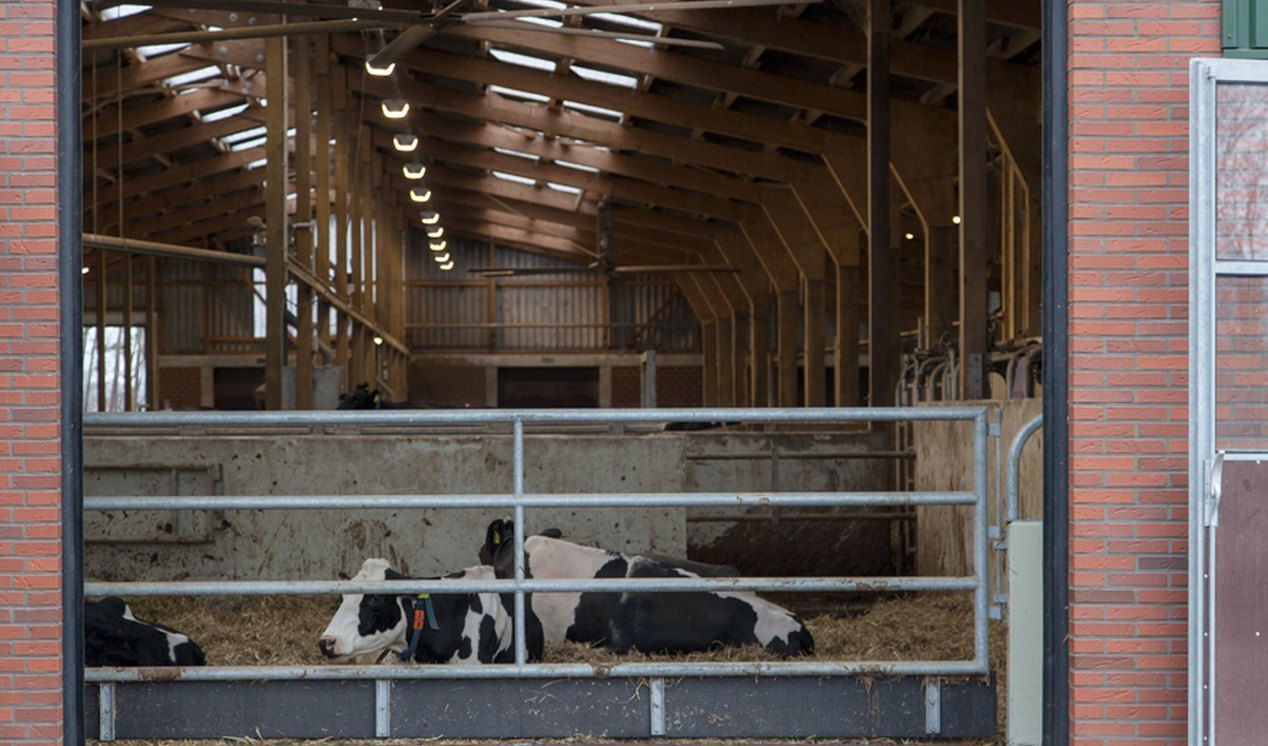
Feed
The dairy cows receive a feed mix based on silage. The silage is prepared for Lansmann by a contractor (corn and grass are harvested by the contractor). The feed is taken over by the farm itself. The silage must be of high quality, which saves concentrated feed. The amount of concentrate a cow receives depends on the amount of milk she gives: the more she gives, the more concentrated feed the food boxes give her. There are five in the barn, which the dairy cows can activate several times a day with the help of their collar chip. The cows do not get more than two kilos of concentrated feed at once, otherwise their rumen would become acidified. A single dairy cow gets a maximum of ten kilos of concentrate per day.
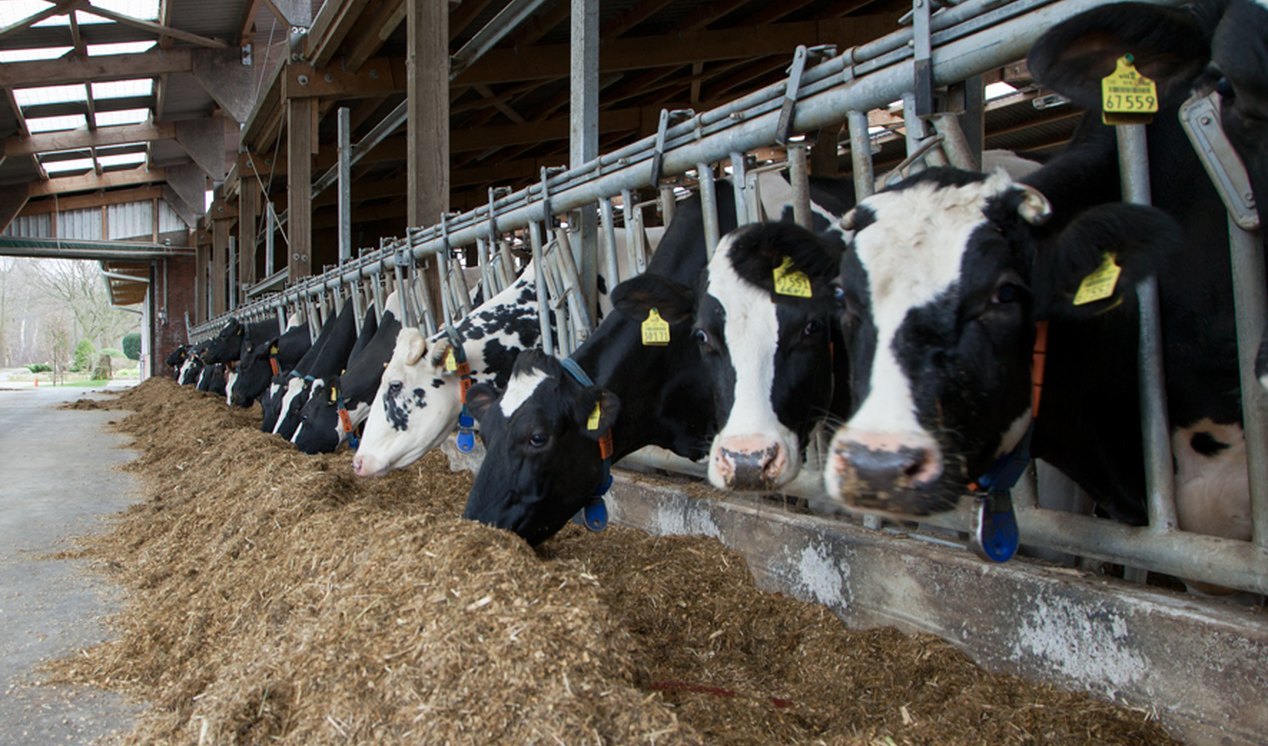
Breeding
Lansmann breeds its own dairy cattle. For calving, there is a special box which is padded with soft straw. If a bull calf is born, the farm sells it to a fattening farm after 14 days. The female calves take around 15 months to reach their natural growth spurt and be inseminated for the first time. After birth, the calf stays with the mother for a few hours, as cow and calf stimulate each other and can process the birthing experience better.
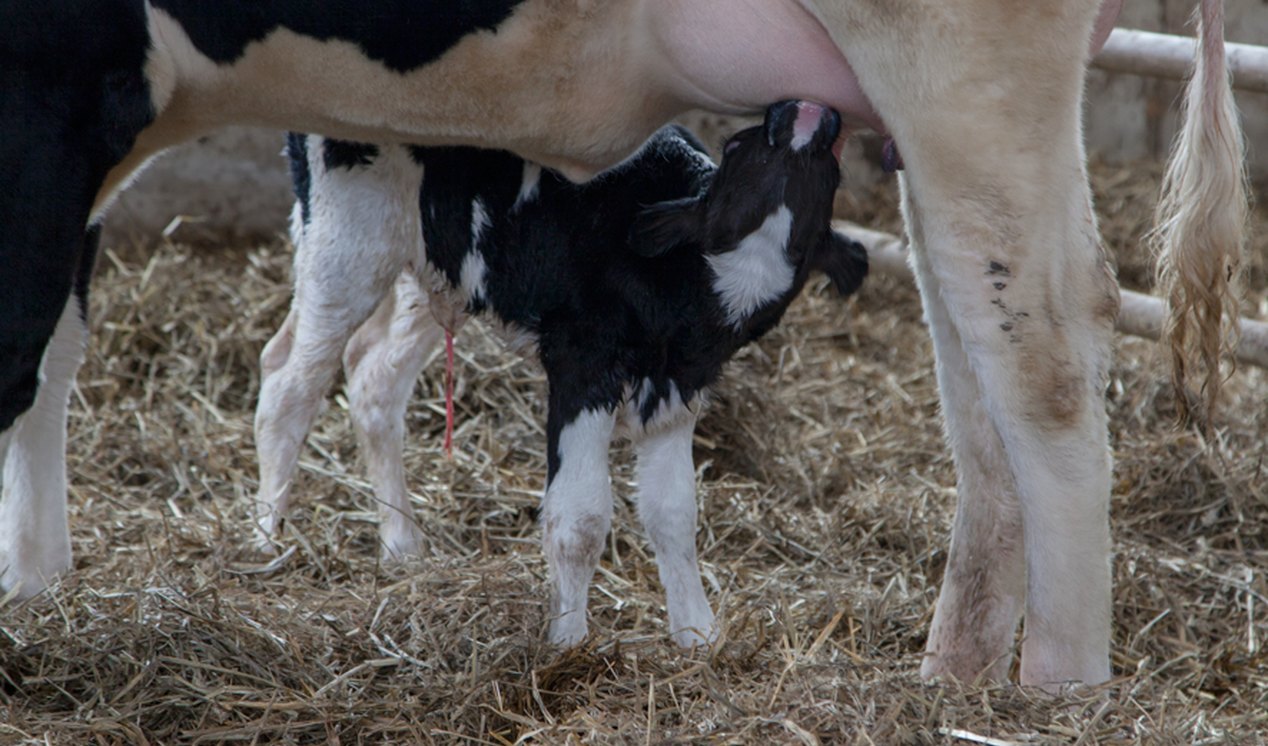
After that, the calves are initially housed in individual pens to get used to the teat bucket – very day they get a little more milk. After three to four weeks, they are acclimated to the group pens and other cows. At the same time, they are slowly weaned off the milk. They then receive roughage in the form of hay, silage and a special concentrate of corn, cereals, soy, sugar beets, molasses, vitamins and minerals. When they have switched to the new feed, they spend eight months in a neighbouring facility belonging to the farm until they are ready for the first insemination.
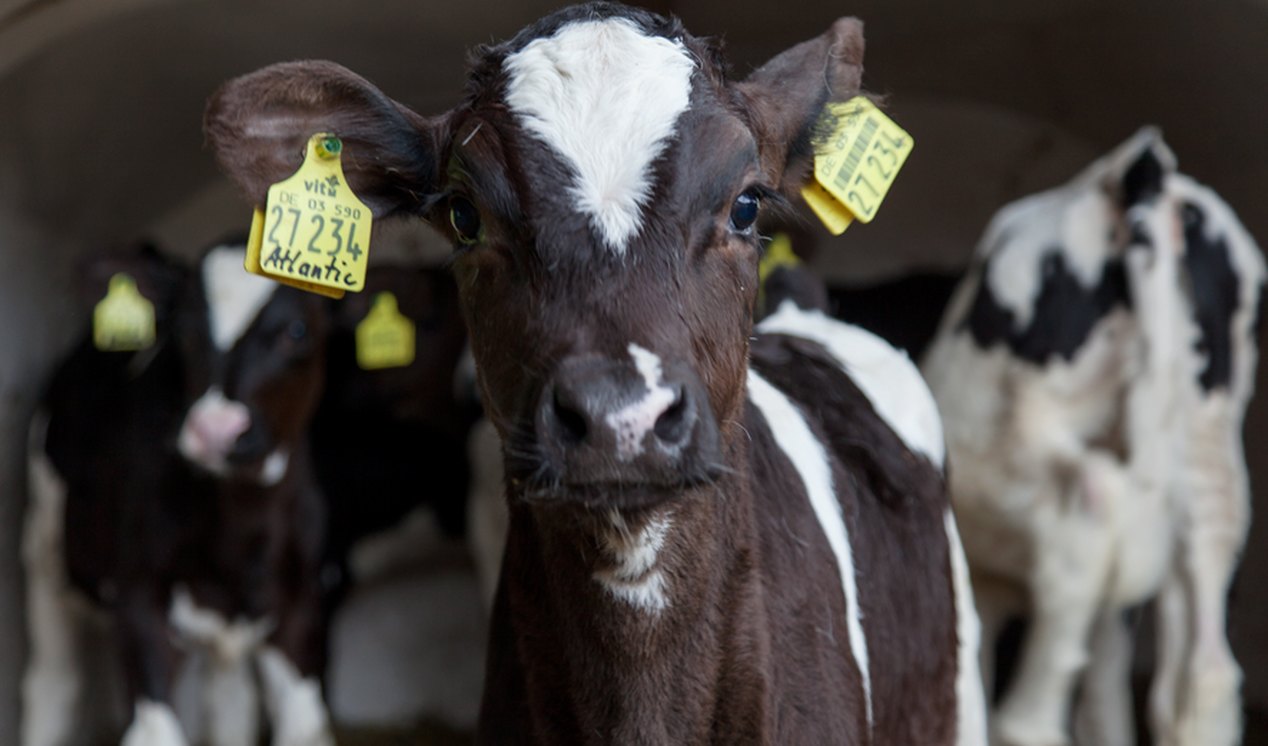
Pasture
As driving paths and shady spots in the meadow are trampled very quickly and are therefore muddy, the Lansmann cows stay in the light and air-flooded barn all year round – because muck means a disease risk for their sensitive hooves.
